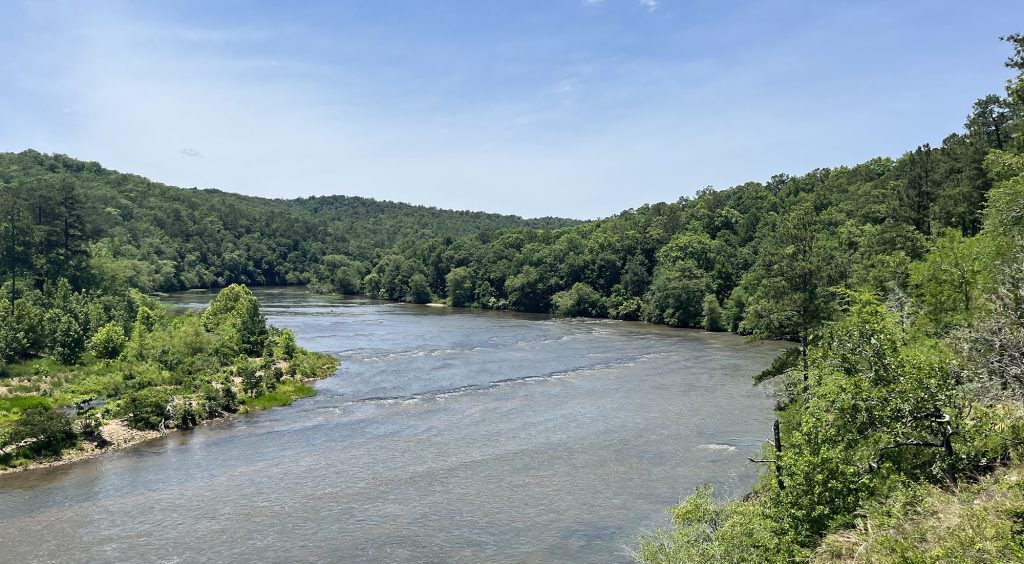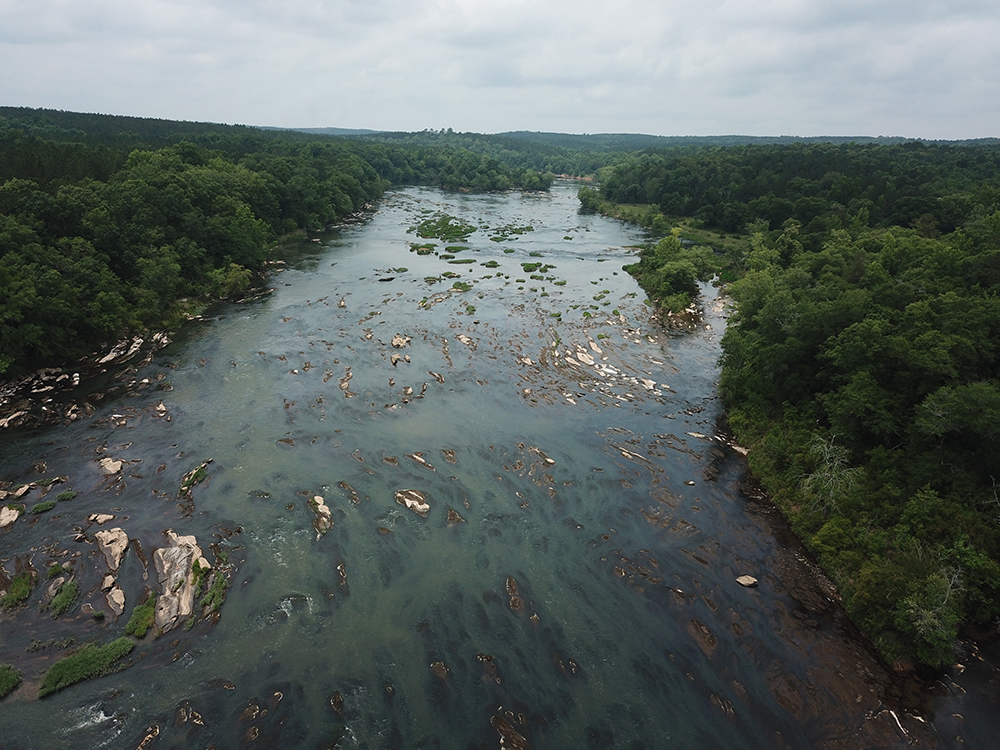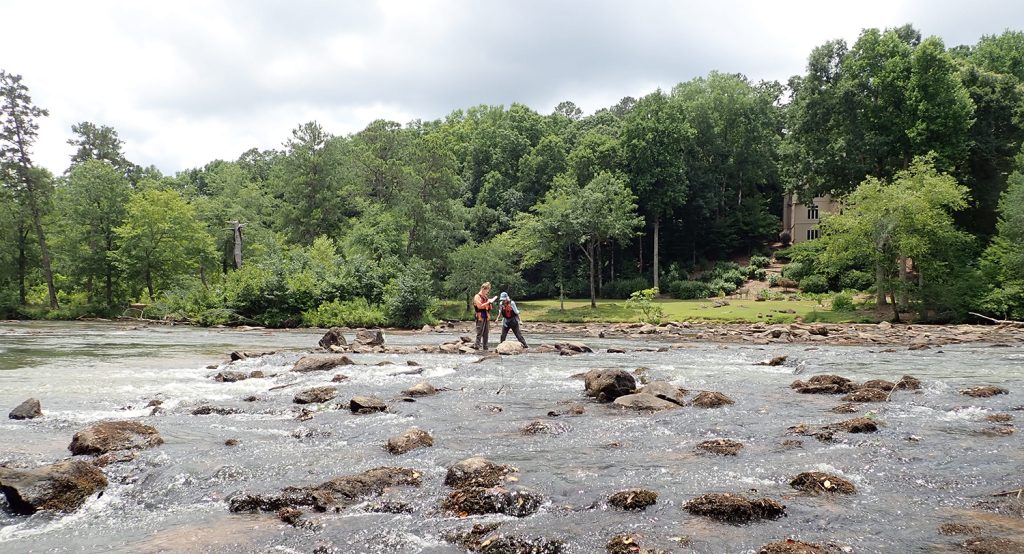
Brandon Lewis plans for the water needs of thousands of people southwest of Atlanta. As director of water and wastewater for the city of Griffin, he manages the system that draws water from the Upper Flint River to supply Griffin homes and businesses, as well as the water systems for four counties and five other cities.
More than 400,000 residents of South Metro Atlanta and central Georgia get their drinking water from the Upper Flint River, making the river a vital resource for the region. But the river is small in its northern headwaters, requiring thoughtful planning during drought to protect it for both the people and the wildlife that depend on the river.

“It’s easy for people in my position to put on blinders and to only be concerned with your community. But only looking to get what we can to secure one community’s future doesn’t serve us. It serves us all better if we look at the big picture,” Lewis said. “I want to be someone who takes a step back and looks to see how we’re impacting wildlife and communities downstream.”
Working together, the University of Georgia River Basin Center and non-profit American Rivers have been collaborating with water utility managers across southwest Atlanta and Central Georgia to develop the information they need to provide water to customers while keeping the river healthy.
Most recently, the RBC and American Rivers came up with three drought-response options for regional water planners to consider, options that could make a big difference when drought strikes.
The report was funded by the Environmental Protection Division as part of a Georgia Regional Water Planning Seed Grant.
“The report doesn’t impose any requirements on the utilities, but when you’re working together in a group, it’s nice to see some of the opportunities available to you and how one action impacts another,” said Laura Rack, a postdoctoral researcher at the Odum School of Ecology, who works with the River Basin Center and the Georgia Water Planning and Policy Center and authored the seed grant report.
Limited options
A series of droughts in the late 1990s showed the limitations of the small streams at the headwaters of the Flint River and the demand that Atlanta suburbs can put on that supply.
In summer 2013, American Rivers and the non-profit Flint Riverkeeper published “Running Dry: Challenges and Opportunities in Restoring Healthy Flows in Georgia’s Upper Flint River Basin” and followed up with the “Upper Flint River Resiliency Action Plan” to guide work to make the river more resilient to drought. That plan came from a new Upper Flint River Working Group that brought together a diverse group of stakeholders who depend on the Flint, including water utility leaders and non-profits.
“The work to find solutions for the Upper Flint really started with ‘Running Dry’ and documenting just how dry the river was getting,” said Ben Emanuel, Southeast conservation director for American Rivers. “People hadn’t seen that happen before droughts in the late 1990s and early 2000s. The utilities were seeing the tributaries that they draw water from drying out. And so that was alarming for them, too.”
Since that time, water utility managers, conservation activists and others have been working together to find solutions that will allow them to rely on the Flint without sucking it dry in times of drought.
“We’ve been in dialogue about those challenges for years now, and we’ve seen some of the water utilities take management actions to address some of those challenges. And we had gotten to a place in that ongoing dialogue where having that next cut of technical information would be really important to keep advancing the dialogue going forward,” Emanuel said.

The Flint Seed Grant study considered three drought-response scenarios—using an old quarry to store water; improving infiltration to allow stormwater to seep into the ground, rather than rush to the river and downstream; and decreasing the amount of water that utilities take from the river during drought.
These are common approaches that are used in drought management in rivers, but this analysis was specific to the Flint.
The researchers found that the only way to prevent ecological harm during extreme drought was by keeping more water in the river. But, reducing the water the utilities could withdraw from the river during drought meant a big hit on their reservoirs. Employing the quarry as a repository for river water would offset that.
Functional flows
Following a functional flows approach, the water planners, with support from the RBC and American Rivers, have focused on just how much water the Flint needs to maintain a healthy ecosystem.
“It’s been really important to look at ecosystem water needs,” Emanuel said. “The water providers who participate in the working group all come into the conversation wanting to do their part for stewardship of the river system. When we begin to talk about how much water might be flowing in the river in a drought scenario, it helps us all to have better information on what that means for the river.”
In earlier research conducted as part of graduate studies at Odum School, Rack (MS ’20, PhD ’25) worked to find the species that are the most affected by drought, the ones that serve as important danger warnings in drought.
“I investigated the impacts of drought on the shoal ecosystem. I looked at algae, macroinvertebrates and fish, and I studied what happens to these things when the river flow gets really low due to dry conditions ,” she said. In another project, she considered the minimum flows needed to maintain recreation in the Oconee.

Having goals for functional flows helps utility managers as they plan for future drought.
To evaluate whether and how the three scenarios might help the Flint maintain functional flows, Rack and others used models to estimate the impact on the river, evaluating how the three potential solutions would work in isolation or together.
“When we started keeping more water in the river, we noticed an impact on reservoir storage for the utilities,” Rack said. “When we combined the releases from the quarry site at the top of the basin with those changes to operations and that higher low-flow limit, we still saw some impact on water utilities in terms of reservoir storage. But the combination of those two operations together greatly reduces the impact on the utilities, as well as offering ecological benefits.”
The results of that research were specific to the Upper Flint, but the broader approach of evaluating functional stream flows for water supply and ecosystems can be useful to others, as well. The project also developed a guidance document for how functional flows could be evaluated in water plans—which is applicable to regions outside of the Upper Flint.
“It was envisioned to provide a rough outline of how these functional flows—or flows for species and habitats—work, so that anyone could apply it to their area,” Rack said. “But then we provided a more in-depth example for the Upper Flint Council for how you would apply those functional flows and evaluate them.”
That broad explanation with specific examples could help other water users with planning, even if their solutions look a little different.
Lewis appreciates the perspective as he works to serve water customers while keeping downstream needs in mind.
“My day-in, day-out focuses on drinking water production. I could do that every day and never think about river ecology and drought resiliency,” he said. “So, participating in the working group helps me understand what the larger, bigger picture concerns are. And I can take into consideration what different scenarios mean and how changes to low-flow operations impact the big picture.”
